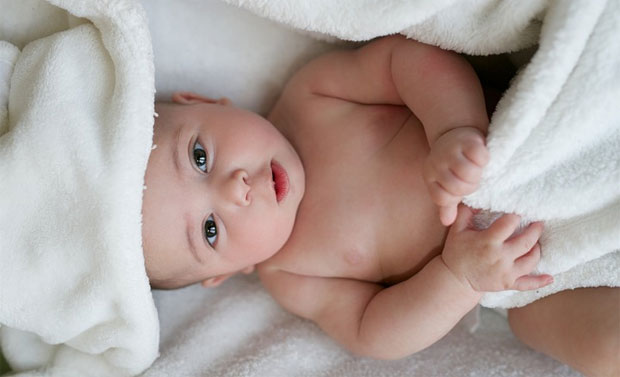5 Tips for Keeping Your Baby Safe in the Bathroom

5 Tips for Keeping Your Baby Safe in the Bathroom
With the arrival of a little one, there are so many things to think about, not least when it comes to ensuring your home, including your bathroom, is baby-safe.
Bathtime is one of the best bonding exercises for parents and babies. It is a great chance for your baby to play and splash about, allowing you to share those precious moments with them. It also forms part of a routine, helping them to relax and letting them know that bedtime is just around the corner.
As your little ones grow, they inevitably become even more curious about their surroundings. Between 6 months and 1 year old, they become more mobile, being able to sit up, crawl and put things in their mouth. By the time they are 2, they will be able to walk, reach up for things and climb. Therefore, your bathroom will need to change to cope with these demands.
Whilst there aren’t any specific bathroom suites for kids, there are a number of things you can do to make your bathroom baby-safe. Here are our 5 top tips.
- Don’t leave your child unattended
THE golden rule when it comes to bathing or washing babies or toddlers. If the doorbell goes or you need to quickly grab something from the next room, never be tempted to leave your child unattended or in the care of another, albeit older, child. Leave a towel handy, so should you need to leave the room swiftly, you can easily pick your baby up and keep them warm.
- Check the water temperature
Another one of those golden rules, you must always test the temperature of any bath or shower water before washing your child. Usually done with the elbow, as it contains some of the most heat-sensitive nerves, your child’s bath should be around 37°C–38°C, which is equivalent to body temperature.
Getting your temperature this accurate can be a little hit and miss, however with a smart showering and bathing system like SmarTap from VictoriaPlum.com, you can achieve absolute precision. Controlled by your smart phone or even through Amazon Alexa, you can set the exact temperature and bath depth. Whilst you will still need to carry out the elbow check, it takes the guesswork out of running your child’s bath.
- Don’t leave items lying around
In a shared bathroom space, it’s all too easy to leave objects lying around, like razors, soap, hair bands and cleaning products. However, for a child who loves baby bathtime, these strange objects will be utterly fascinating.
One of the best ways to prevent your child from picking up potentially harmful objects is to store them safely in a cupboard or drawer. High shelving is a good idea, however once your child reaches the age where they start to climb and explore, it may be worth investing in a lockable mirror cabinet, for added safety.
- Choose a soft close toilet seat
As your child gets older, it pays to keep the toilet seat down to help prevent them from, quite literally, “going down the pan”! A soft closing seat is the best option, as it won’t slam shut and trap little fingers, should they be tempted to lift the lid.
- Avoid slippy flooring
According to RoSPA (The Royal Society for the Prevention of Accidents) the biggest cause of children’s accidents is falling. Most bathrooms contain a range of hard surfaces in the form of ceramics and acrylic baths, however there are measures you can put in place to minimise the risk of falls.
If you have a tiled floor, a non-slip bath mat is an excellent idea, helping to keep toddlers on their feet. A rubber mat in the bath is also a good way to prevent slips and tumbles.
Follow the advice in this article and you’ll help to make baby’s bathtime fun for everyone involved.
Guest Article.




